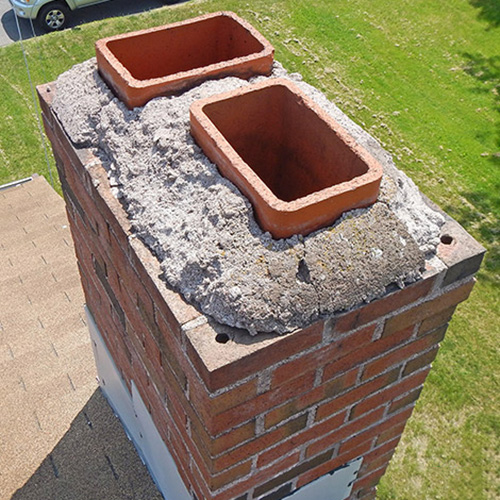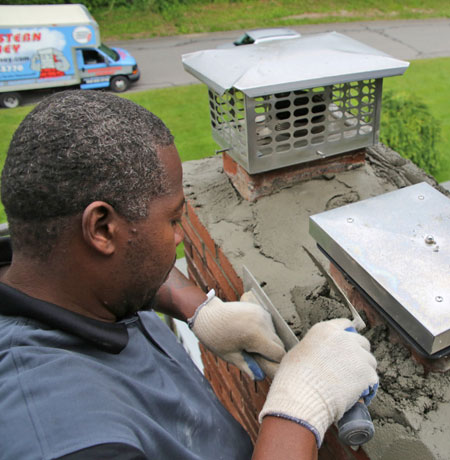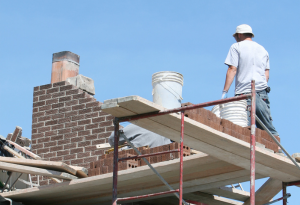All Firewood Is Not the Same
Any kind of logs from trees will burn in a fireplace. However, not all types of logs perform equally. Some can actually cause serious problems if used regularly.
Fluesbrothers Chimney & Fireplace of Kansas City, KS, would like to share a little about the different types of firewood and how to choose the best type to use in your fireplace.

The two types of wood
Dividing firewood into two groups makes it easier to understand. The two types of wood are:
- Hardwood
- Softwood
The reason it’s important to differentiate the type of firewood is because each type has its own unique characteristics.
Hardwood
Wood that’s considered “hard” burns longer and hotter while producing less smoke than softer woods. Hardwood is usually easier to get started than softwood and is ideal when you’ll be using your fireplace for extended periods and don’t want to keep refilling the firebox.
Examples of hardwood include:
- Ash
- Walnut
- Oak
- Maple
- Hickory
- Elm
Softwood
Softwoods tend to burn a lot faster than hardwoods, and they’re known for creating more smoke and producing less heat. This type of wood is a good choice when you want a quick fire that doesn’t burn for hours, although it can take a little longer to ignite than hardwood varieties.
Examples of softwood include:
- Fir
- Juniper
- Redwood
- Spruce
- Yew
- Pine
Smoke issues
One of the biggest concerns with firewood is smoke. Smoke rises in the chimney flue, and some of it condenses before leaving the top of the chimney. Condensed smoke becomes creosote.
Creosote is a highly flammable substance that’s responsible for most chimney fires in the U.S. each year. The more creosote, the greater the chance of a serious fire. For this reason, it’s advisable to use mostly hardwoods in your fireplace.
Another cause of excess smoke – in any type of wood – is high moisture content. Fresh wood that hasn’t had at least six months to dry out, or “season,” contains a lot of moisture and makes a lot of smoke. Seasoned wood burns much more efficiently and won’t add as much smoke (and creosote) to your flue.
Chimney safety
If you use a wood-burning fireplace, you won’t be able to completely prevent the production of creosote. You can, however, reduce its danger and your risk of a devastating chimney fire.
Annual chimney sweeping is the solution. CSIA-certified chimney sweeps have the training and equipment to remove creosote from your flue before it builds to a dangerous level.
Chimney technicians use rods, brushes, chains, whips, solvents, and commercial vacuums to do this job. Chimney sweeping isn’t something a homeowner can do with a long brush, and chimney “cleaning” logs are only good for supplemental maintenance, not for thorough cleaning.
 Call your Kansas City chimney experts
Call your Kansas City chimney experts
Now that you know the difference between hard and soft firewood and how smoke turns into creosote, you can make informed decisions about the wood you burn and how to keep your chimney clean and safe.
Fluesbrothers serves the entire Kansas City region with certified chimney sweeping, licensed chimney inspections, and expert chimney repairs. If it’s been more than a year since your chimney was last swept, give us a call at (913) 236-7141. You can also reach out with our handy contact form.
The post All Firewood Is Not the Same appeared first on Fluesbrothers Chimney Service.
 Fire Protection
Fire Protection






